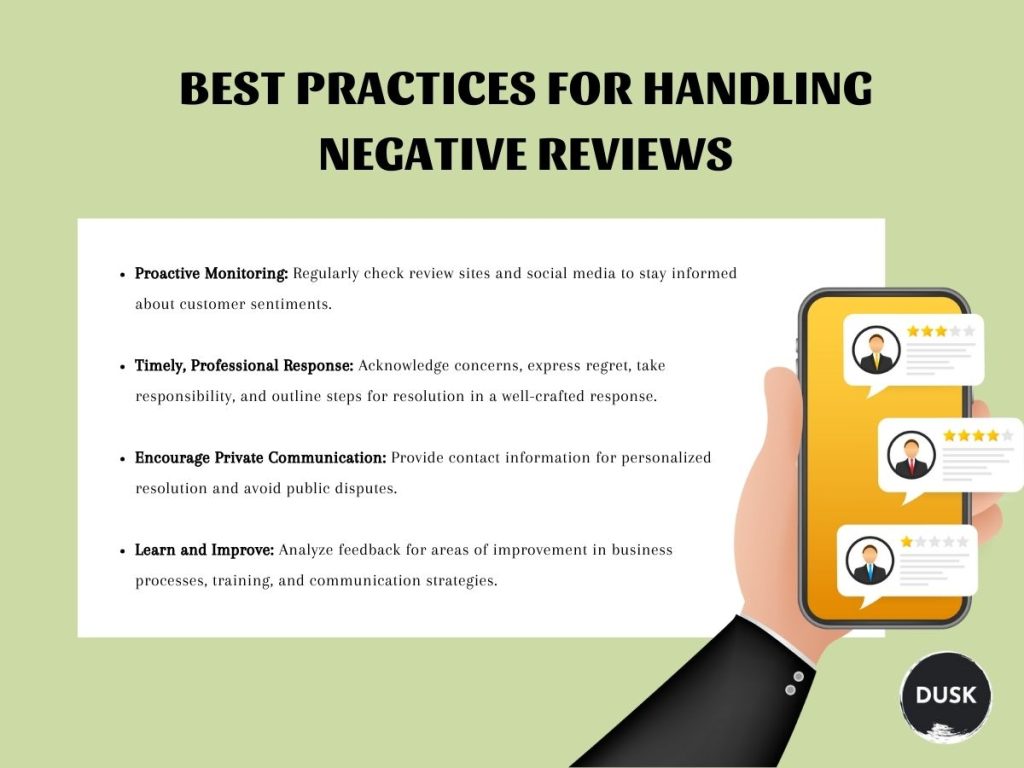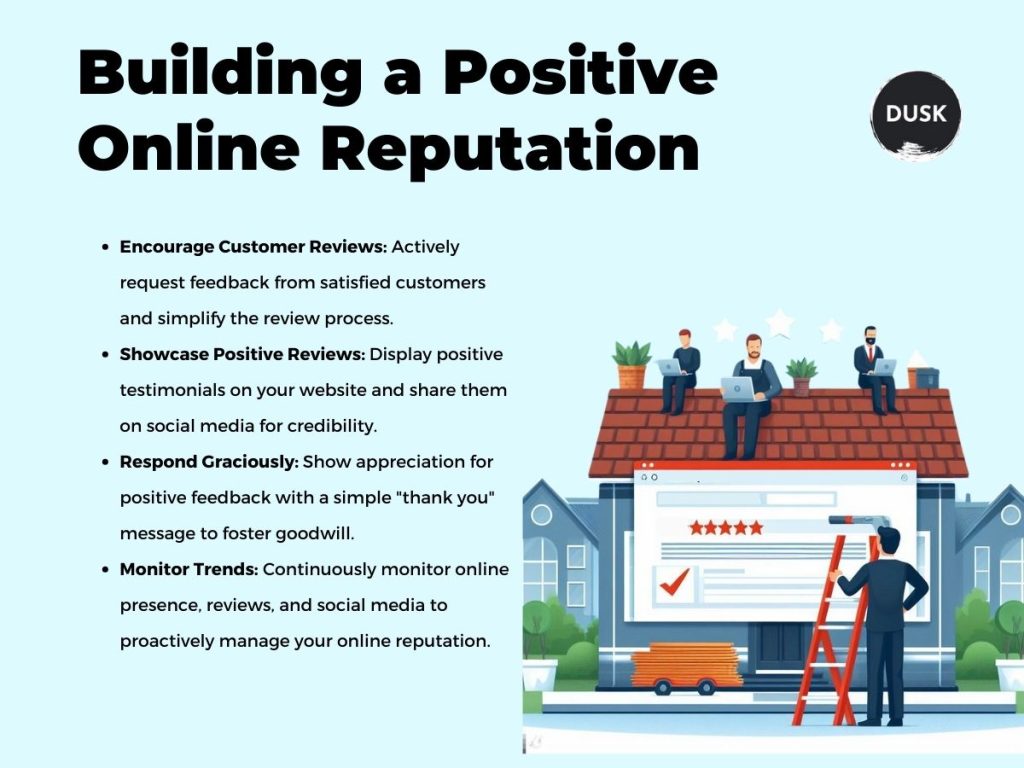Within the dynamic field of business, the Internet has emerged as the principal platform for constructing or destroying reputations. Online reviews are a double-edged sword for roofing companies; they may be a great source of publicity but can also be a risk to their reputation.
Unfavorable reviews have a significant influence since people are using social media, Yelp, and Google more and more to make decisions. Roofing companies must actively respond to and handle unfavorable reviews in addition to keeping an eye on their internet image.
This way, they may show their dedication to client satisfaction and transform difficult circumstances into chances for growth. What are the best practices for roofing businesses when it comes to handling negative reviews? This blog answers just that.
Understanding Negative Reviews
Unfavorable internet evaluations can turn off potential clients, regardless of how averse you are to social media and how you handle it. Every business owner is aware that negative reviews are inevitable.
Negative reviews are something all businesses will encounter at some time in their daily operations. Positive reviews can inspire you and benefit your company, but negative ones are frequently difficult to read and absorb and occasionally even significantly reduce sales for your company.
1. Common Reasons for Negative Reviews
Negative reviews within the roofing industry often stem from a variety of issues, with communication problems ranking high among them. When customers feel that their expectations were not adequately communicated or that there was a breakdown in dialogue, they are more likely to express dissatisfaction online.
Quality of work is another prevalent concern; customers may voice their discontent if the delivered roofing services fall short of expected standards. Timeliness, or the lack thereof, is a third common issue that can lead to negative reviews, as delays in project completion can understandably frustrate clients.
2. The Potential Impact on Potential Customers
Negative reviews have a far-reaching impact on potential customers who are researching roofing services. Prospective clients often rely on the experiences shared by others to gauge the reliability and professionalism of a roofing business.
An accumulation of negative reviews can create doubt in the minds of potential customers, dissuading them from choosing a particular service provider. Understanding the gravity of this influence is crucial for roofing businesses aiming to maintain and grow their clientele.
Best Practices for Handling Negative Reviews
When handling bad evaluations, the proverb “an ounce of prevention is better than a pound of cure” is unquestionably accurate. However, how does that apply to your company? Establishing a service leadership culture and a positive, “can-do” mentality within your organization is important.
You’ll probably receive fewer complaints if you, your teams, and your office personnel are kind, helpful, and truly concerned about making up for any perceived wrongs by the customer. However, with so many disparate reviews, how can you be certain that your response will benefit rather than harm your business?

1. Monitor Online Platforms Proactively
To effectively manage negative reviews, roofing businesses must adopt a proactive approach to monitoring various online platforms. Regularly checking popular review sites such as Google, Yelp, and industry-specific forums allows businesses to stay informed about customer sentiments.
Social media monitoring tools can extend this oversight to platforms like Facebook and Twitter, ensuring a comprehensive understanding of what customers say about their experiences.
2. Respond Promptly and Professionally
A timely and professional response is paramount when faced with a negative review. Acknowledge the customer’s concerns and express genuine regret for any inconvenience experienced. Taking responsibility for the issue, even if the fault lies elsewhere, demonstrates accountability.
Outline the steps being taken to address the problem and, where applicable, provide contact information for further offline communication. A well-crafted response helps resolve the immediate issue and showcases the business’s commitment to customer satisfaction to potential clients who may come across the review.
3. Encourage Private Communication for Resolution
In certain instances, it’s prudent to take the conversation offline. Providing contact information or inviting the customer to reach out directly allows for a more personalized and focused resolution. This approach not only safeguards the business’s public image but also demonstrates a genuine commitment to resolving issues rather than engaging in public disputes.
Private communication channels enable roofing businesses to address concerns comprehensively, offering tailored solutions that may not be suitable for public discussion.
4. Learn from Feedback and Implement Changes
Negative reviews, when viewed constructively, can be valuable sources of feedback. Rather than viewing them solely as criticisms, roofing businesses should analyze common themes and identify areas for improvement. This feedback loop can inform changes in business processes, employee training, or communication strategies.
Building a Positive Online Reputation
Assuming you receive a substantial number of reviews each month, congratulations. You’ve cleared a challenge that many startups find difficult to meet. Nevertheless, receiving credible testimonials for your roofing business is insufficient.
Answering such reviews is the next step. Consumers appreciate and anticipate a firm reply to their feedback. The basic line is that you should always reply to positive or negative reviews for your roofing business.

1. Encouraging Satisfied Customers to Leave Reviews
One of the most effective strategies for building a positive online reputation is to encourage satisfied customers to share their experiences actively. After completing a roofing project, businesses should initiate a follow-up process, expressing gratitude for the customer’s trust and politely requesting feedback.
Encouraging customers to leave good reviews can be greatly increased by simplifying the review procedure and offering direct access to review platforms. Roofing companies can offset the effects of sporadic unfavorable reviews by fostering a consistent flow of good comments.
2. Showcasing Positive Reviews on Business Platforms
Harnessing the power of positive reviews involves more than just accumulating them—showcasing them prominently is equally important. Integrating positive testimonials on the business website, especially on high-traffic pages like the homepage or service offerings, serves as a testament to the quality of service provided.
Additionally, regularly sharing positive reviews on social media reinforces the business’s positive image and enhances its credibility in the eyes of potential customers.
3. Responding Graciously to Positive Feedback
Responding to positive reviews is just as crucial as addressing negative ones. Expressing genuine appreciation for positive feedback demonstrates a commitment to customer satisfaction and creates a positive interaction for potential customers reading the reviews.
A simple “thank you” message not only acknowledges the customer’s time and effort in leaving a review but also fosters a sense of goodwill that can contribute to repeat business and positive word-of-mouth referrals.
4. Monitoring Online Reputation Trends
Building and maintaining a positive online reputation is an ongoing process that requires vigilance. Roofing businesses should consistently monitor their online presence, staying attuned to trends in customer sentiment.
This entails monitoring reviews, actively interacting with clients on social media, and quickly responding to questions and concerns. Businesses can quickly address new problems and strengthen their positive online reputation by proactively managing online reputation.
Preventing Negative Reviews
Consumers write evaluations to inform others of a company’s advantages and disadvantages. These reviews can be helpful since they show you what problems need to be fixed, but they can also be detrimental to your reputation if not handled properly.
Make sure you commit resources to resolving any concerns raised in negative reviews that you get in bulk. This will not only help you get fewer negative ratings, but it will also enhance your general customer service.
1. Setting Clear Expectations
One of the most effective ways to prevent negative reviews is to establish clear and transparent communication from the outset. Roofing businesses should provide accurate and detailed information about project timelines, potential challenges, and the scope of work.
Through proactive management of client expectations, firms can mitigate the possibility of miscommunications that could result in discontent. This entails laying out the entire procedure, addressing any delays, and specifying each party’s obligations in detail.
2. Transparent Pricing and Cost Communication
Ambiguity regarding pricing and additional costs is a common source of customer frustration and a precursor to negative reviews. Roofing companies should be open and honest about their price schedule and any possible extra fees to avoid misunderstandings.
Providing detailed quotes, including potential extra costs for unforeseen issues, helps in managing customer expectations. Clear communication about pricing establishes trust and minimizes the risk of negative feedback related to financial matters.
3. Implementing Rigorous Quality Control Measures
Ensuring the quality of roofing work is paramount to preventing negative reviews. Strict procedures for quality control should be implemented by businesses at every project stage, from the selection of materials to installation.
Staff members can fill in any skill shortages and maintain high standards with the support of regular training programs. Roofing companies can avoid bad evaluations by building a positive reputation and meeting customer expectations through constant, high-quality work.
4. Regularly Updating Customers on Project Progress
Communication throughout the project is essential to preventing dissatisfaction. Roofing businesses should establish a system for providing regular updates to customers on the progress of their projects.
This can include reached milestones, unforeseen difficulties, and if needed, updated schedules. Businesses can lower the risk of unfavorable reviews resulting from poor communication by communicating with customers and showing transparency and commitment to their needs.
Using Customer Feedback for Improvement
What issues did your clients encounter? Finding the things you may modify to lessen the likelihood of those issues happening again is important. For instance, you might consider spending money on a solution that enhances communication if the client’s instructions are overlooked.
It may be time to adjust your job estimation methods if the customer pays significantly more for your work than you had estimated. In any case, you may improve your roofing customer service by using criticism as a teaching tool.
1. Conducting Customer Surveys
To harness the full potential of customer feedback, roofing businesses should actively seek input through structured customer surveys. These surveys can cover various aspects of the customer experience, including communication, work quality, timeliness, and overall satisfaction.
Implementing targeted surveys allows businesses to gather specific insights into areas that may require improvement. The collected data serves as a valuable foundation for informed decision-making and strategic planning.
2. Analyzing Feedback Patterns and Trends
Beyond individual survey responses, roofing businesses need to analyze feedback patterns and trends. Through the identification of recurrent themes in consumer feedback, companies can discover systemic problems that could be causing adverse experiences.
Whether it’s a consistent communication challenge or a specific service aspect that needs enhancement, understanding these patterns enables businesses to implement targeted improvements and prevent similar issues from arising in the future.
3. Implementing Changes Based on Feedback
Customer feedback should not be treated as static information but as a catalyst for positive change. Roofing businesses should use the insights from surveys and feedback analysis to implement tangible changes in their processes, services, or internal training programs.
Whether it involves refining communication protocols, addressing specific areas of concern, or enhancing overall service quality, taking action based on customer feedback demonstrates a commitment to continuous improvement.
4. Communicating Changes to Customers
Transparency is key when implementing changes based on customer feedback. Roofing businesses should communicate with customers, acknowledging the feedback received and outlining the steps to address identified issues.
This demonstrates responsiveness and reassures customers that their input is valued. Open communication about improvements instills confidence in current and future customers, showcasing the business’s commitment to providing an excellent customer experience.
The Power of Online Reviews: Managing Your Roofing Company’s Reputation
Online reviews have a significant impact on a business’s success and reputation. Roofing companies may strengthen their online image and lessen the impact of unfavorable reviews by embracing client feedback as a tool for ongoing improvement.
When you set out to manage the reputation of your roofing business, remember that the process entails dealing with obstacles and taking advantage of favorable evaluations. The reputation of your roofing company is more important than ever in the digital age, where internet evaluations are shaping consumer decisions more and more.As we’ve covered “The Power of Online Reviews: Managing Your Roofing Company’s Reputation,” we’ve gone in-depth on how to deal with bad reviews, establish a strong online presence, and use client feedback to advance your business. With your newfound knowledge of how to deal with challenges, think about the other side of the coin: how can you use good feedback to your benefit?






